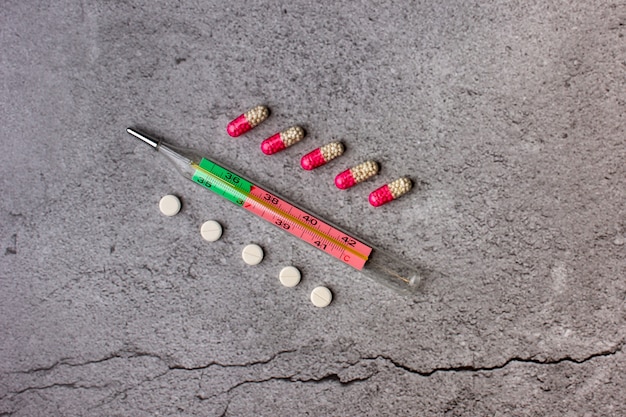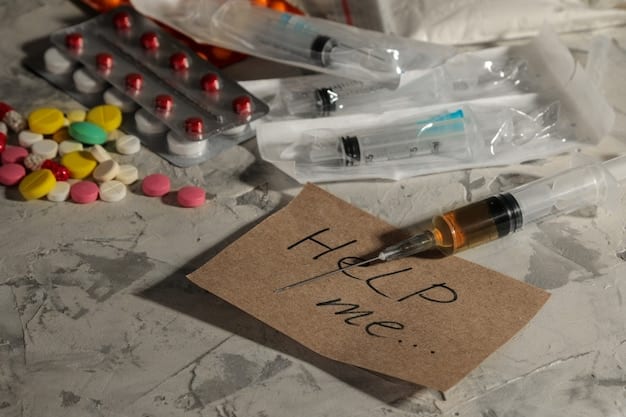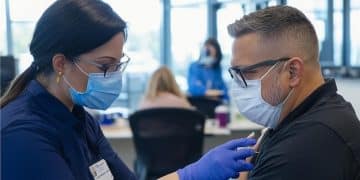Combating the Opioid Crisis: Public Health Initiatives & Resources

Local communities in the US are implementing diverse public health initiatives, including naloxone distribution, medication-assisted treatment (MAT), and public awareness campaigns, to combat the opioid crisis and provide resources for prevention, treatment, and recovery.
The opioid crisis continues to impact communities across the United States, but local public health initiatives are stepping up to combat this epidemic. Discover how these efforts are making a difference in combating the opioid crisis: new public health initiatives and resources available in your community.
Understanding the Opioid Crisis in the US
The opioid crisis in the United States is a complex public health issue with deep roots and devastating consequences. Over the past two decades, the misuse of prescription opioids, the rise of illicit fentanyl, and the resulting overdose deaths have created a persistent challenge for communities nationwide. Understanding the scope and drivers of this crisis is critical to developing effective strategies for prevention, treatment, and recovery.
The crisis is characterized by:
- High rates of opioid prescriptions
- Increased availability of illicit opioids
- A surge in overdose deaths
- Significant public health and economic burden
Several factors have contributed to this epidemic, including aggressive marketing of prescription painkillers, lack of awareness about the addictive potential of opioids, and socioeconomic disparities that exacerbate vulnerability to substance use disorders.

New Public Health Initiatives Addressing the Crisis
To combat the opioid crisis, many new public health initiatives have been implemented across the United States. These initiatives focus on multiple strategies to prevent opioid misuse, increase access to treatment, and reduce overdose deaths. Let’s explore some of the most promising approaches.
Naloxone Distribution Programs
Naloxone, often known by the brand name Narcan, is a life-saving medication that can reverse opioid overdoses. Numerous programs have been created to distribute naloxone to first responders, healthcare providers, and the general public.
Medication-Assisted Treatment (MAT) Expansion
Medication-assisted treatment utilizes FDA-approved medications, such as buprenorphine and methadone, coupled with behavioral therapies, to treat opioid use disorder (OUD). Expanding access to MAT is a critical component of addressing the opioid crisis.
- Increased funding for MAT programs
- Training healthcare providers in MAT protocols
- Reducing stigma associated with MAT
A comprehensive strategy is crucial for successful MAT implementation, incorporating counseling, peer support, and long-term recovery planning.
Community education plays a key role in reducing stigma and encouraging individuals to seek treatment.
Community-Based Resources for Prevention and Treatment
Addressing the opioid crisis effectively requires a multifaceted strategy that incorporates both prevention and treatment. Community-based resources play a vital role in providing comprehensive support to individuals affected by opioid use and their families. These resources can range from educational programs aimed at preventing opioid misuse to treatment facilities offering medication-assisted treatment and counseling services.
Community-based initiatives such as:
- Educational programs in schools
- Support groups for individuals and families
- Drop-in centers providing resources and referrals
By working together, communities can build a strong support network that promotes prevention, treatment, and recovery.

The Role of Healthcare Providers in Combating Opioids
Healthcare providers play a pivotal role in stopping opioid misuse and treating opioid abuse. As prescribers, educators, and caregivers, they can significantly impact patient outcomes and contribute to the overall effort to combat the opioid crisis. This involves a variety of strategies, including responsible prescribing practices, patient education, and the integration of addiction treatment into healthcare settings.
Responsible Prescribing Practices
One of the most important steps healthcare providers can take is to adopt responsible prescribing practices. This includes:
- Carefully assessing patients’ needs and risk factors
- Prescribing the lowest effective dose for the shortest duration
- Using alternative pain management strategies when appropriate
Preventing misuse also involves monitoring patients closely for signs of addiction.
Integrating Addiction Treatment into Healthcare Settings
Making addiction treatment part of normal healthcare can:
- Increase access to care
- Reduce stigma
- Improve patient outcomes.
By integrating addiction treatment into healthcare settings, healthcare providers can play a crucial role in combating the opioid crisis.
Healthcare providers are the tip of the spear when it comes to identifying at-risk individuals and shepherding them toward treatment and recovery.
Legal and Policy Changes Supporting Public Health Efforts
Legal and policy measures play a crucial role in supporting public health efforts to address the opioid crisis. These changes can create an environment that reduces the availability of illicit opioids, promotes responsible prescribing practices, and increases access to treatment and recovery services. By implementing effective legal and policy changes, communities can strengthen their ability to prevent opioid misuse, reduce overdose deaths, and improve public health outcomes.
Some key areas of focus include:
- Prescription drug monitoring programs (PDMPs)
- Naloxone access laws
- Good Samaritan laws
Policy changes can also support community-based prevention efforts, such as expanding access to early intervention programs and increasing funding for substance use disorder treatment services.
By implementing these legal and policy changes, communities can create a safer and healthier environment for all residents.
Overcoming Stigma and Promoting Recovery
Overcoming stigma associated with opioid use disorder (OUD) and promoting recovery are essential components of addressing the opioid crisis. Stigma can prevent individuals from seeking treatment, accessing resources, and achieving long-term recovery. By reducing stigma and fostering a supportive environment, communities can encourage individuals to seek help, improve treatment outcomes, and enhance the overall well-being of those affected by OUD.
Reducing Stigma Through Education and Awareness
Public education campaigns can help dispel myths and misconceptions about OUD, promoting accurate information and empathy. These campaigns can:
- Share personal stories of recovery
- Highlight the science of addiction
- Challenge stereotypes and biased attitudes
Education in schools, workplaces, and community settings can also increase awareness and understanding of OUD.
Promoting a Culture of Recovery and Support
Creating supportive communities is essential for promoting recovery. This entails:
- Establishing recovery-friendly workplaces
- Providing access to peer support groups
- Offering family support services
The cultivation of this kind of recovery culture is critical for those battling the disease.
| Key Element | Brief Description |
|---|---|
| ⚕️ MAT Expansion | Increases access to medication-assisted treatment with drugs like buprenorphine. |
| 🛡️ Naloxone Kits | Distributes naloxone to reverse opioid overdoses, saving lives in emergencies. |
| 📢 Community Programs | Local centers offer support, education, and resources for prevention and treatment. |
| 🤝 Provider Training | Educates healthcare staff on responsible opioid prescriptions and addiction care. |
Frequently Asked Questions
▼
Naloxone is a medication that quickly reverses opioid overdose effects by blocking opioids in the brain. It is often given as a nasal spray and can restore normal breathing.
▼
MAT uses FDA-approved medicines like buprenorphine with counseling to treat Opioid Use Disorder. It relieves withdrawal and cravings, helping people recover better.
▼
To find resources, contact your local health department, search online databases like SAMHSA’s, or reach out to local hospitals and community centers.
▼
Offer support, listen without judgment, and encourage them to seek professional help. Assist in finding resources and services and participate in family support groups.
▼
Signs include slow/stopped breathing, blue lips/fingertips, unresponsiveness, and gurgling sounds. If you suspect an overdose, administer naloxone and call 911 immediately.
Conclusion
Combating the opioid crisis: new public health initiatives and resources available in your community requires a comprehensive and collaborative effort. From naloxone distribution and MAT expansion to community-based programs and policy changes, various strategies are being implemented to address this complex issue and by staying informed about these initiatives and resources, you can contribute to a healthier, more supportive community.





